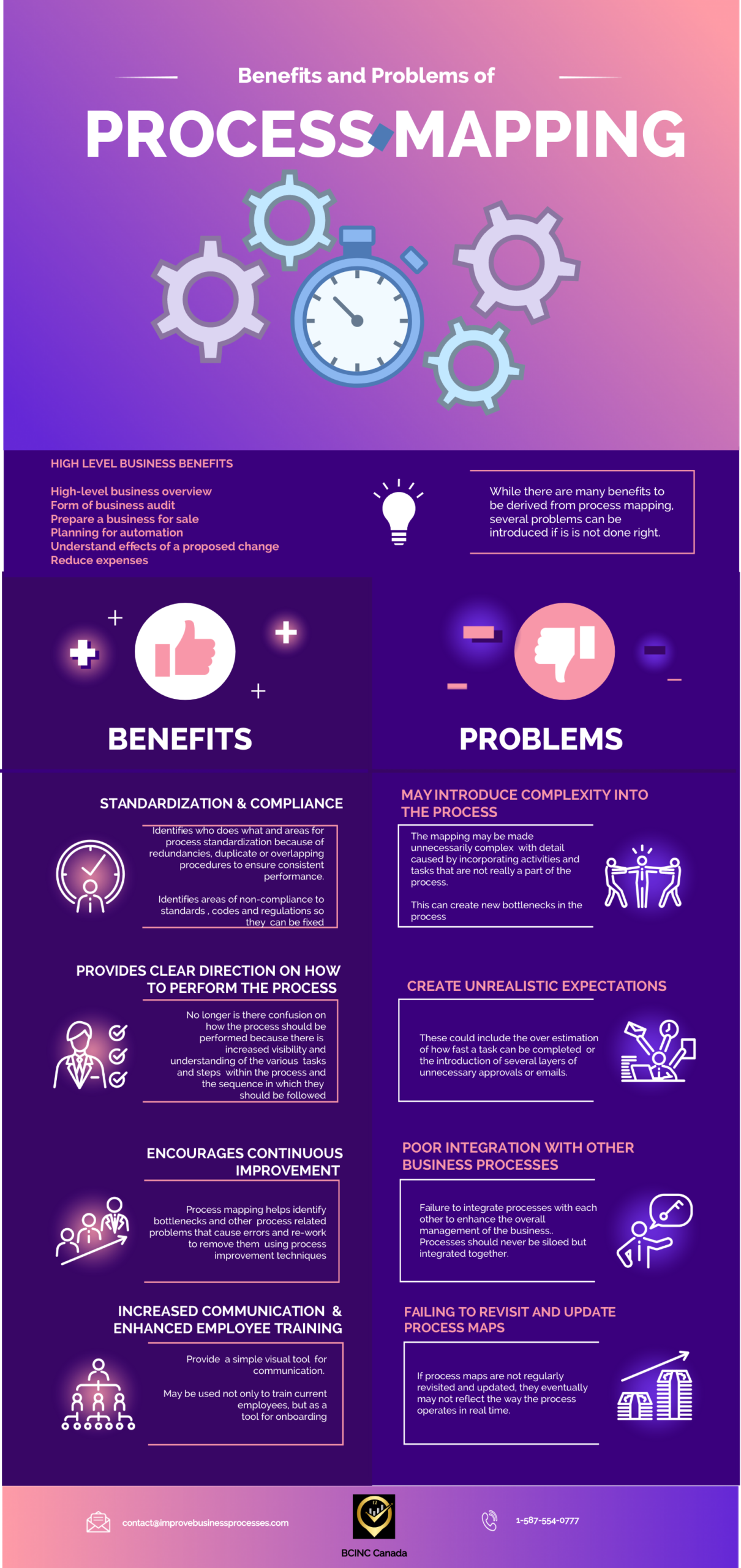The Business Processes Map when it is properly created sheds light, in a visual manner, on the various steps in a process from start to finish.
It also identifies who does what at every step along the way including their inputs, and identifies if controls are currently in place. It establishes a baseline for its current state in the business.
Based on the gaps identified, improvements can then be made to the process.
Benefits of A Business Process Map – Are They Worth the Investment?
Many small business owners wonder about the true benefits of a business process map created from a mapping exercise. Some question whether such a financial investment for such a mapping exercise is worth their while.
Furthermore, to some business owners, the maps are too complicated and will never be used by the business when they are completed. However, modern process maps are more easy to understand than traditional process maps.
These are all legitimate concerns that stem from not understanding the benefits of process mapping.
Previous articles – Benefits of Business Process Mapping – The Best and How to Conduct Business Processes Mapping – Why Bother? address some of these concerns, the uses of business process mapping and discusses what processes to map.
Mapping requires time, effort, and skill but the benefits of the improved process are significant.
On the other hand, if not done properly, it could end up creating new problems including bottlenecks in the business
High Level Benefits of a Business Processes Map
- Provides the business with a high-level overview
- Can form part of a business audit
- Can be used to prepare a business for sale
- Is highly beneficial when planning for automations
- Helps to understand the effects of a proposed change on the business
- Can be used for cost reduction initiatives
How Does Process Mapping Affect A Business?
This can be assessed by first taking a look at the benefits to be derived from properly mapped processes. Obviously, all the high level benefits will be absent in a business with poorly mapped processes.
Fresh problems and bottlenecks may also be introduced into the business as a result of poor process mapping considerably reducing efficiency and increasing corrective costs.
The infographic “Benefits and the Associated Problems of Process Mapping” compares the drilled down benefits of process mapping vs the problems experienced from poor mapping.
Business Process Maps – Benefits and Associated Problems

Benefits
Standardized Processes and Regulatory Compliance
A process can be standardized by documenting it through mapping such that it can always be performed in the same series of steps to improve efficiency and reduce confusion created by ambiguity. Processes that are standardized perform more consistently.
Process mapping ensures that the business complies not only with regulations, standards, codes, and industry best practices, but also necessary operational corporate requirements put in place by the organization.
Clarity About Activities, Execution Steps and Sequencing
There is no longer confusion on how the tasks and activities of a process and their sequencing are executed. This is because of increased visibility due to mapping.
Promotes Continuous Improvement
Helps identify bottlenecks and other process related problems that cause errors and re-work t with the aim of removing them by using process improvement techniques.
By process mapping routinely, opportunities for continuous improvement can be identified and addressed.
Communication and Employee Training
Mapping provides a standard document which can be used for internal communication in the business and also train current employees. This document is also a good tool for onboarding new employees because of its pictorial format.
Problems Caused By Poor Process Mapping
May Introduce Complexity Into the Process
A process can be standardized by documenting it through mapping such that it can always be performed in the same series of steps to improve efficiency and reduce confusion created by ambiguity. Processes that are standardized perform more consistently.
Business Processes Mapping Tools Can Create Unrealistic Expectations
These could include the over estimation of how fast a task can be completed or the introduction of several layers of unnecessary approvals or emails.
Poor Integration with Other Business Processes
Failure to integrate processes with each other to enhance the overall management of the business. Processes should never be siloed but integrated together.
Failing to Revisit and Update Process Maps
If process maps are not regularly revisited and updated, they eventually may not reflect the way the process operates in real time.
Conclusion
Business process maps are a powerful tool to improve the performance of processes. Poor mapping can introduce additional problems into a business. Skilled practitioners can get the job done correctly.
BCINC Canada is skilled and trained to assist your company with process mapping. Call us or schedule a no obligation consultation.
Reference
IBM. Visualize Processes https://www.ibm.com/cloud/process-mapping

